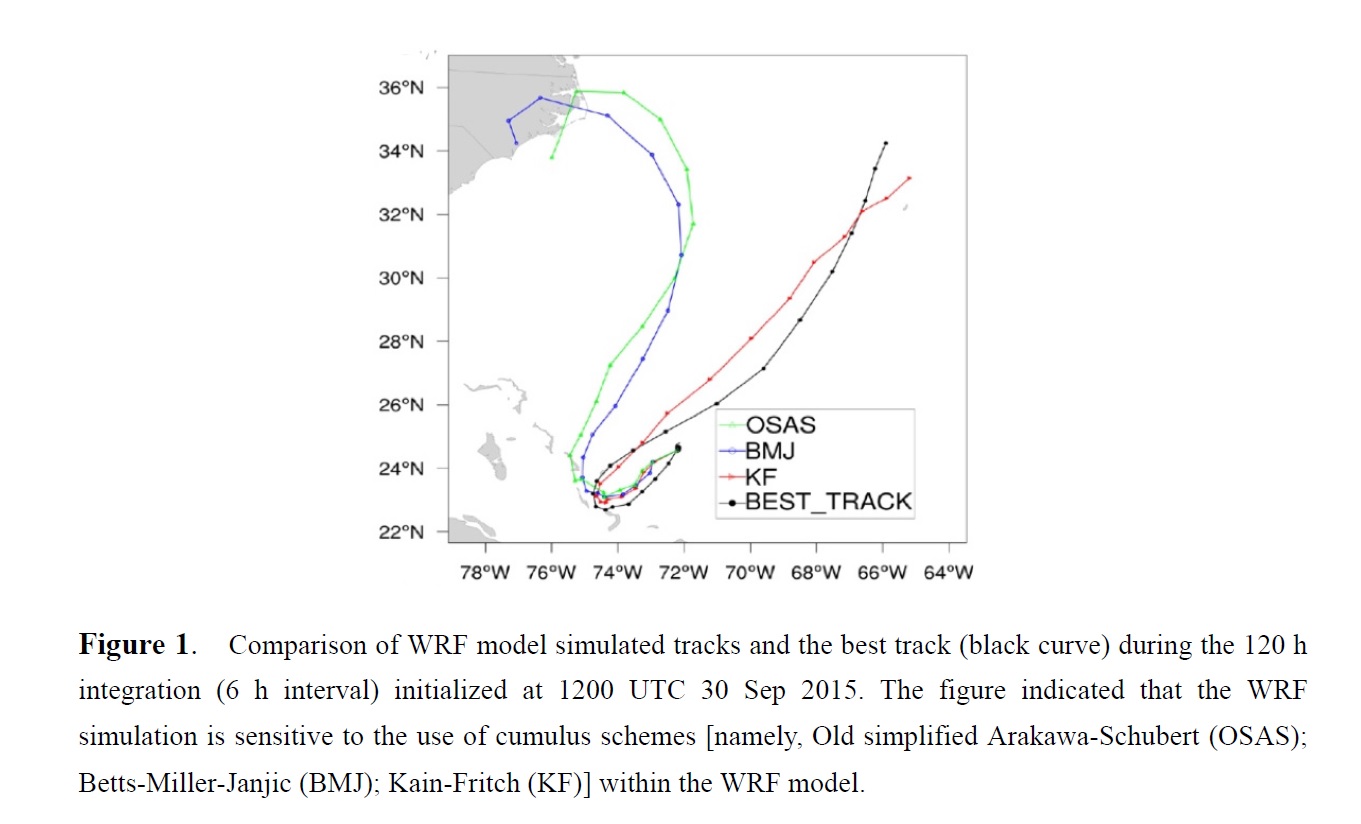Graphical Abstract
Saunders, P., Y. Yu, and Z. Pu, 2019: Sensitivity of numerical simulations of Hurricane Joaquin (2015) to cumulus parameterization schemes: Implications for processes controlling a hairpin turn in the track. J. Meteor. Soc. Japan, 97, 577-595.
https://doi.org/10.2151/jmsj.2019-030
Graphical Abstract with highlights
Plain Language Summary: Hurricane Joaquin, a notable hurricane over the Atlantic Ocean in 2015, is studied with emphasis on its unique hairpin turn that occurred between 2100 UTC 1 October and 0600 UTC 2 October 2015. A series of mesoscale high-resolution numerical simulations are performed with an advanced research version of the Weather Research and Forecasting (WRF) model. Results indicate that middle- to upper-level steering flows are crucial in influencing Joaquin’s track. The middle-level blocking high also plays a vital role in Joaquin’s movement. Specifically, the asymmetry and local absolute vorticity tendency over the inner-core region and its vicinity has a strong implication for Joaquin’s hairpin turn.
Highlights:
- The numerical simulation of Hurricane Joaquin’s track is highly sensitive to the choice of cumulus scheme in the WRF model.
- The middle- to upper-level steering flows and the middle-level blocking high are crucial in influencing Joaquin’s track.
- The asymmetry and local absolute vorticity tendency over the inner-core region and its vicinity has a strong implication for Joaquin’s hairpin turn.







